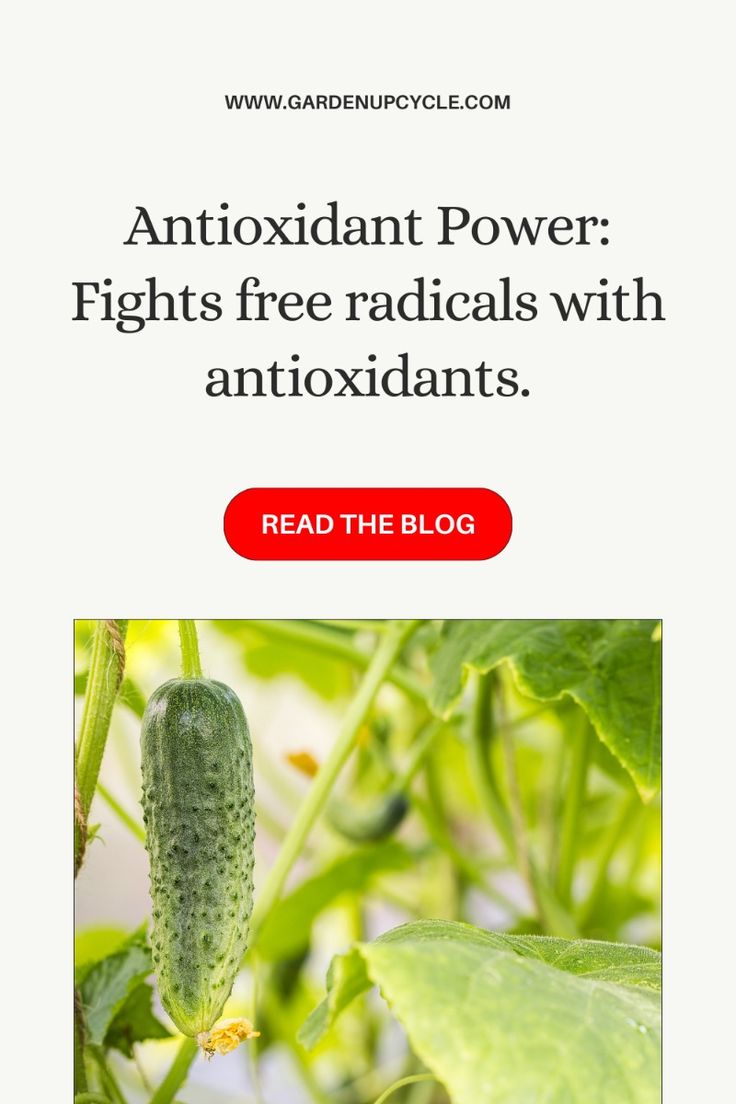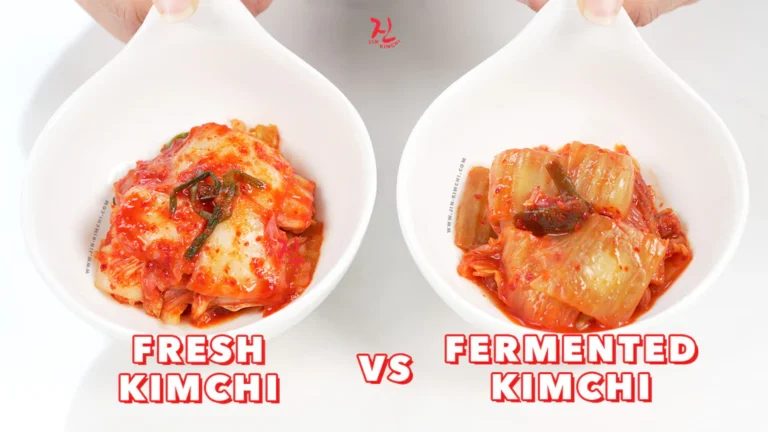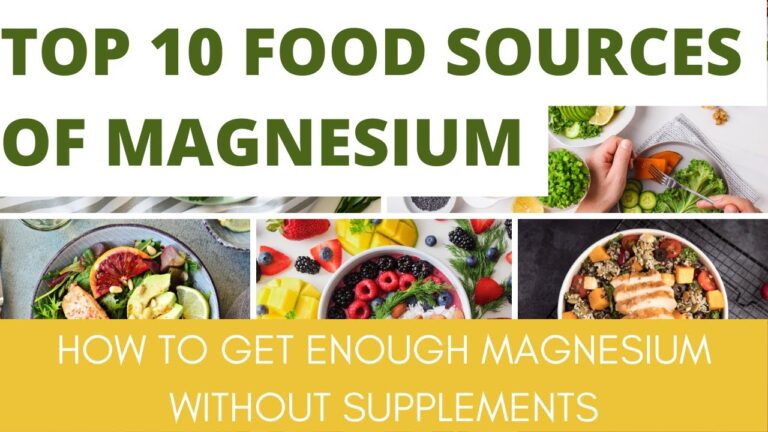The Invisible War Within: Unveiling the Antioxidant Powerhouse Hiding in Cucumber
In the intricate ballet of life, every cell within our bodies dances on a tightrope, constantly striving for balance. Yet, this delicate equilibrium is perpetually threatened by an unseen enemy, a relentless internal aggressor known as free radicals. These volatile molecules, born from the very processes that sustain us, wage an invisible war, inflicting damage that contributes to aging, chronic disease, and a myriad of health challenges. But nature, in its infinite wisdom, has bestowed upon us an arsenal of protectors – antioxidants – and among them, often overlooked and underestimated, lies a humble hero: the cucumber.
This isn’t merely a story about a crunchy, refreshing vegetable. This is a narrative journey into the heart of cellular defense, a deep dive into the silent struggle for health, and the surprising revelation of how a common garden staple, the cucumber, stands as a formidable ally in our quest for well-being. Prepare to look beyond the watery crunch and discover the profound power hidden within this unassuming green gem.
The Unseen Adversary: Understanding Free Radicals and Oxidative Stress
To truly appreciate the cucumber’s prowess, we must first understand the enemy it helps combat. Free radicals are atoms or molecules with an unpaired electron in their outer shell. This seemingly minor chemical quirk makes them incredibly unstable and highly reactive. Driven by an insatiable desire to achieve stability, they indiscriminately snatch electrons from other molecules in their vicinity – a process known as oxidation.
Imagine a meticulously constructed building block tower. A free radical is like a rogue player who pulls out a block from the middle, causing the entire structure to become unstable, potentially leading to its collapse. In our bodies, this "block pulling" happens at a molecular level, damaging crucial cellular components:
- Lipids (fats): Particularly vulnerable are the polyunsaturated fatty acids that make up our cell membranes. When oxidized, these lipids undergo a process called lipid peroxidation, compromising the integrity and function of cell membranes. This can lead to leaky cells, impaired nutrient transport, and faulty signaling.
- Proteins: Enzymes, structural proteins, and transport proteins can all be damaged by free radicals. This impairs their ability to carry out vital cellular functions, from metabolism to DNA repair.
- DNA (deoxyribonucleic acid): Perhaps the most insidious damage occurs to our genetic material. Free radical attacks can cause mutations, breaks in DNA strands, and cross-linking, all of which can lead to cellular dysfunction, premature aging, and an increased risk of cancer.
The cumulative effect of this free radical assault is termed oxidative stress. It’s not a momentary event but a state of imbalance where the production of free radicals overwhelms the body’s capacity to neutralize them.
Where do these troublemakers come from?
Free radicals are an unavoidable byproduct of life itself. They are generated through:
- Normal Metabolic Processes: Cellular respiration, the process by which our mitochondria produce energy (ATP) from oxygen and nutrients, is a major source. About 1-2% of the oxygen we breathe ends up forming free radicals.
- External Environmental Factors:
- Pollution: Air pollutants, industrial chemicals, and pesticides.
- Radiation: UV radiation from the sun, X-rays, and even cosmic rays.
- Tobacco Smoke: A potent cocktail of free radicals and pro-oxidants.
- Certain Medications: Some drugs can increase free radical production.
- Heavy Metals: Lead, mercury, cadmium, and arsenic.
- Lifestyle Factors:
- Stress: Chronic psychological stress can induce oxidative stress.
- Poor Diet: Diets high in processed foods, sugar, and unhealthy fats, and low in fruits and vegetables.
- Intense Exercise: While generally healthy, excessive or unaccustomed intense exercise can temporarily increase free radical generation.
- Inflammation: Chronic inflammation is both a cause and consequence of oxidative stress.
The consequences of unchecked oxidative stress are far-reaching, implicated in the development and progression of numerous chronic diseases, including cardiovascular disease, neurodegenerative disorders (Alzheimer’s, Parkinson’s), diabetes, certain cancers, and accelerated aging.
The Guardians of Health: How Antioxidants Fight Back
Enter the heroes of our story: antioxidants. These remarkable molecules are the body’s natural defense mechanism against free radical damage. Their primary mode of action is to neutralize free radicals by donating an electron, thereby stabilizing the free radical without becoming unstable themselves. It’s like giving that rogue player a stable block to replace the one they pulled, preventing the tower from collapsing.
Antioxidants come in various forms and work through different mechanisms:
-
Enzymatic Antioxidants: Produced internally by the body, these are complex protein systems that efficiently convert free radicals into less harmful molecules. Key players include:
- Superoxide Dismutase (SOD): Converts superoxide radicals into hydrogen peroxide.
- Catalase: Breaks down hydrogen peroxide into water and oxygen.
- Glutathione Peroxidase: Reduces hydrogen peroxide and organic hydroperoxides.
- Glutathione Reductase: Regenerates reduced glutathione, a critical non-enzymatic antioxidant.
-
Non-Enzymatic Antioxidants: These are primarily obtained through our diet. They include:
- Vitamins: Vitamin C (ascorbic acid), Vitamin E (tocopherols), and Beta-carotene (a precursor to Vitamin A).
- Minerals: Selenium, zinc, and manganese act as cofactors for enzymatic antioxidants.
- Phytochemicals: A vast array of plant-derived compounds, including flavonoids, polyphenols, lignans, carotenoids (beyond beta-carotene), and many more. This is where the cucumber truly shines.
The human body possesses an impressive innate antioxidant system, but it’s not foolproof. The modern world’s onslaught of environmental toxins, combined with dietary deficiencies, can overwhelm this system. This is where dietary antioxidants become indispensable. By consuming a diet rich in fruits, vegetables, and whole foods, we empower our bodies with the external reinforcements needed to win the invisible war.
The Humble Hero: Unveiling Cucumber’s Antioxidant Arsenal
For many, the cucumber is simply a hydrating snack, a cooling slice in water, or a crisp addition to a salad. Its mild flavor and high water content often lead to an underestimation of its nutritional heft. Yet, beneath that verdant skin lies a treasure trove of antioxidant compounds, each playing a vital role in our cellular defense.
The cucumber (Cucumis sativus) belongs to the gourd family (Cucurbitaceae), alongside melons and squashes. While its water content (around 95%) is its most prominent feature, making it an excellent hydrator, it’s the remaining 5% that holds the key to its powerful antioxidant profile.
Let’s delve into the specific antioxidants and related compounds that make cucumber a true powerhouse:
-
Vitamin C (Ascorbic Acid): While not present in quantities as high as citrus fruits, cucumber does contribute a meaningful amount of Vitamin C. This water-soluble vitamin is a potent antioxidant, directly neutralizing free radicals. It also plays a crucial role in regenerating other antioxidants, such as Vitamin E, and is essential for collagen synthesis, immune function, and iron absorption.
-
Beta-carotene (Pro-vitamin A): Cucumbers contain beta-carotene, a vibrant carotenoid that the body converts into Vitamin A. Beta-carotene itself is a powerful antioxidant, particularly effective at scavenging singlet oxygen radicals, a type of free radical formed during exposure to UV light. Vitamin A, in turn, is vital for vision, immune function, and skin health.
-
Manganese: This trace mineral acts as a crucial cofactor for the enzyme Superoxide Dismutase (SOD), one of the body’s primary enzymatic antioxidants. SOD is on the front lines, converting the highly reactive superoxide radical into less harmful hydrogen peroxide, which is then further broken down by other enzymes. Thus, manganese indirectly but critically supports the body’s internal antioxidant defense system.
-
Flavonoids: These are a diverse group of plant pigments and powerful polyphenolic antioxidants. Cucumbers are particularly rich in several notable flavonoids:
- Quercetin: A well-researched flavonoid known for its potent antioxidant and anti-inflammatory properties. It helps stabilize mast cells, reducing histamine release, and has been studied for its potential roles in cardiovascular health and cancer prevention.
- Kaempferol: Another significant flavonoid found in cucumbers, kaempferol exhibits strong antioxidant activity and has demonstrated anti-inflammatory, antimicrobial, and even anti-cancer properties in various studies.
- Apigenin: Known for its calming effects and potential anti-cancer properties, apigenin also contributes to the cucumber’s overall antioxidant capacity.
- Luteolin: This flavonoid is another potent antioxidant and anti-inflammatory compound, showing promise in neuroprotective roles.
Flavonoids often work synergistically, enhancing each other’s effects and providing a broad spectrum of protection against different types of free radicals. They also contribute to the vibrant color of the cucumber skin.
-
Lignans: These are a class of plant compounds known as phytoestrogens, meaning they can weakly mimic estrogen in the body. Beyond their hormonal modulating effects, lignans (such as pinoresinol and secoisolariciresinol) are powerful antioxidants. They have been linked to a reduced risk of certain hormone-sensitive cancers (like breast and prostate cancer) and play a role in cardiovascular health, partly due to their antioxidant and anti-inflammatory actions.
-
Triterpenes (Cucurbitacins): This is where cucumbers truly distinguish themselves. Cucurbitacins are a group of potent biochemical compounds unique to the Cucurbitaceae family. These are responsible for the slightly bitter taste sometimes found in cucumbers, particularly near the stem end or in older specimens. While their bitterness can be undesirable, their health benefits are profound:
- Antioxidant Activity: Cucurbitacins, particularly cucurbitacin E, have demonstrated significant free radical scavenging abilities.
- Anti-inflammatory Properties: Research suggests cucurbitacins can inhibit inflammatory pathways, making them valuable in managing chronic inflammatory conditions.
- Anti-cancer Potential: This is perhaps the most exciting area of research for cucurbitacins. Studies have shown they can inhibit the growth of cancer cells, induce apoptosis (programmed cell death) in various cancer lines, and even suppress tumor development in animal models. They appear to interfere with signaling pathways crucial for cancer cell proliferation and survival.
The concentration of cucurbitacins can vary depending on the cucumber variety, growing conditions, and ripeness. The skin often contains higher concentrations than the flesh.
-
Silica: While not a direct antioxidant, silica (silicon dioxide) is a trace mineral crucial for the health of connective tissues, including skin, hair, and nails. By supporting the structural integrity of these tissues, silica indirectly contributes to the body’s resilience against environmental stressors and helps maintain the youthful appearance of skin, which can be compromised by oxidative damage. It plays a role in collagen formation, a protein that provides structure to tissues and organs.
-
Chlorophyll: The pigment that gives cucumber its green color, chlorophyll also possesses antioxidant properties. It can help protect against certain carcinogens and has a detoxifying effect in the body, supporting cellular health.
Beyond Antioxidants: The Holistic Benefits of Cucumber
While its antioxidant power is compelling, cucumber’s contribution to overall health extends further, creating a synergistic effect that amplifies its protective qualities:
- Exceptional Hydration: With 95% water content, cucumber is a hydration champion. Proper hydration is fundamental for every bodily function, from nutrient transport and waste removal to temperature regulation and joint lubrication. Well-hydrated cells are more resilient to damage and function optimally, supporting the body’s natural defense mechanisms.
- Anti-inflammatory Effects: Many of the compounds discussed – flavonoids, lignans, and cucurbitacins – possess strong anti-inflammatory properties. Since chronic inflammation is intricately linked with oxidative stress and the development of numerous diseases, cucumber’s ability to quell inflammation is a significant health benefit.
- Digestive Health: Cucumber contains both soluble and insoluble fiber, albeit in modest amounts. Combined with its high water content, this helps promote regular bowel movements, prevent constipation, and support a healthy gut microbiome, which is increasingly recognized as a cornerstone of overall health and immune function.
- Blood Sugar Regulation: Cucumbers have a very low glycemic index, meaning they cause a minimal rise in blood sugar. This makes them an excellent snack for individuals managing diabetes or those looking to maintain stable energy levels and prevent insulin spikes, which can contribute to oxidative stress.
- Weight Management: Low in calories and high in water and fiber, cucumbers are incredibly filling. Incorporating them into meals or as snacks can help promote satiety, reduce overall calorie intake, and support healthy weight management without sacrificing essential nutrients.
- Cardiovascular Health: The potassium in cucumbers helps regulate blood pressure by counteracting the effects of sodium. Magnesium also contributes to heart health. Furthermore, the antioxidant and anti-inflammatory compounds help protect blood vessels from damage, reducing the risk of atherosclerosis and other cardiovascular diseases.
- Bone Health: Cucumbers provide Vitamin K, which is essential for bone mineralization and blood clotting. Adequate Vitamin K intake is associated with a reduced risk of fractures.
- Skin Health (Topical and Internal): Beyond internal benefits, cucumber is a classic topical remedy for skin. Its cooling properties reduce puffiness and soothe irritation (think cucumber slices on eyes). Internally, its high water content, silica, and antioxidants support skin hydration, elasticity, and protection against environmental damage, contributing to a healthy, radiant complexion.
Maximizing Cucumber’s Potential: Practical Integration
To fully harness the antioxidant prowess and holistic benefits of cucumber, a few considerations can enhance its impact:
- Eat the Skin: The skin of the cucumber is a concentrated source of many beneficial compounds, including flavonoids, lignans, and cucurbitacins. Opt for organic cucumbers to minimize pesticide exposure, and give them a good wash before consuming them with the skin on.
- Choose Wisely: While all cucumbers offer benefits, some varieties may have higher concentrations of specific compounds. Generally, smaller, darker green cucumbers tend to have a richer nutrient profile than paler, larger ones.
- Fresh is Best: Like most fresh produce, cucumbers lose some of their nutritional value over time. Consume them soon after purchase for maximum benefit.
- Variety is Key: While cucumber is a powerhouse, it’s part of a larger team. A diverse diet rich in a rainbow of fruits, vegetables, whole grains, and healthy fats is the most effective strategy for combating oxidative stress and promoting overall health.
Ways to Incorporate More Cucumber:
- Hydrating Infused Water: Add slices of cucumber to your water with mint or lemon for a refreshing, subtly flavored drink.
- Salads Galore: From simple green salads to grain bowls and pasta salads, cucumber adds a delightful crunch and fresh flavor.
- Smoothies and Juices: Blend cucumber into your green smoothies or juice it with other vegetables like celery, apple, and ginger for a nutrient-dense beverage.
- Healthy Snacks: Enjoy cucumber slices with hummus, guacamole, or a sprinkle of sea salt and chili flakes.
- Cooling Soups: Cucumber is a star in chilled soups like gazpacho or a simple cucumber-yogurt soup.
- Sandwiches and Wraps: Add thin slices of cucumber for extra crunch and hydration.
- Dips and Spreads: Incorporate finely diced cucumber into yogurt-based dips like tzatziki.
- Pickling: Fermented pickles (without excessive sugar) offer additional probiotic benefits alongside cucumber’s inherent advantages.
The Story Continues: A Call to Embrace the Green Goodness
The journey from understanding the invisible threat of free radicals to appreciating the humble cucumber’s multifaceted defense mechanism reveals a profound truth: nature provides us with powerful tools for health, often in the most unassuming packages. The cucumber, far from being just a watery filler, emerges as a sophisticated arsenal of antioxidants, anti-inflammatory agents, and vital nutrients.
It tells a story of cellular resilience, of the constant battle waged within, and of the simple, accessible ways we can empower our bodies to thrive. By integrating this green powerhouse into our daily lives, we’re not just adding a refreshing crunch; we’re actively participating in our own well-being, fortifying our defenses, and nurturing the delicate balance that defines true health. So, next time you reach for a cucumber, remember the invisible war it helps fight, and celebrate the mighty power hiding in its unassuming green skin. Embrace the green goodness, and let the cucumber be a testament to nature’s enduring capacity to heal and protect.






